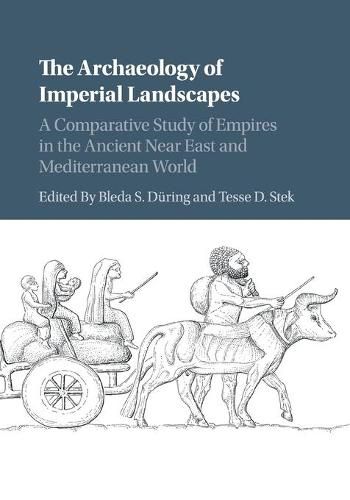Readings Newsletter
Become a Readings Member to make your shopping experience even easier.
Sign in or sign up for free!
You’re not far away from qualifying for FREE standard shipping within Australia
You’ve qualified for FREE standard shipping within Australia
The cart is loading…






The Archaeology of Imperial Landscapes examines the transformation of rural landscapes and societies that formed the backbone of ancient empires in the Near East and Mediterranean. Through a comparative approach to archaeological data, it analyses the patterns of transformation in widely differing imperial contexts in the ancient world. Bringing together a range of studies by an international team of scholars, the volume shows that empires were dynamic, diverse, and experimental polities, and that their success or failure was determined by a combination of forceful interventions, as well as the new possibilities for those dominated by empires to collaborate and profit from doing so. By highlighting the processes that occur in rural and peripheral landscapes, the volume demonstrates that the archaeology of these non-urban and literally eccentric spheres can provide an important contribution to our understanding of ancient empires. The ‘bottom up’ approach to the study of ancient empires is crucial to understanding how these remarkable socio-political organisms could exist and persist.
$9.00 standard shipping within Australia
FREE standard shipping within Australia for orders over $100.00
Express & International shipping calculated at checkout
The Archaeology of Imperial Landscapes examines the transformation of rural landscapes and societies that formed the backbone of ancient empires in the Near East and Mediterranean. Through a comparative approach to archaeological data, it analyses the patterns of transformation in widely differing imperial contexts in the ancient world. Bringing together a range of studies by an international team of scholars, the volume shows that empires were dynamic, diverse, and experimental polities, and that their success or failure was determined by a combination of forceful interventions, as well as the new possibilities for those dominated by empires to collaborate and profit from doing so. By highlighting the processes that occur in rural and peripheral landscapes, the volume demonstrates that the archaeology of these non-urban and literally eccentric spheres can provide an important contribution to our understanding of ancient empires. The ‘bottom up’ approach to the study of ancient empires is crucial to understanding how these remarkable socio-political organisms could exist and persist.